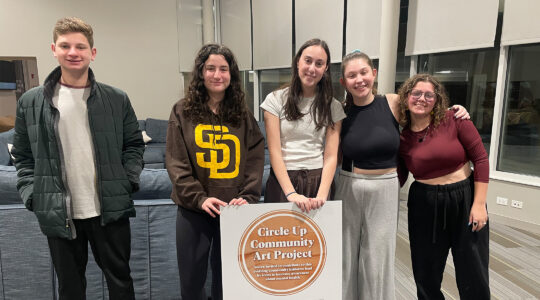Roses are red,
Violets are blue,
Comparing Jewish matchmakers to Hitler?
Whoa, WAY too soon.
[[READMORE]]
During the Great Depression, finding true love through a matchmaker, or shadchan, could cost a pretty penny. As JTA writer Harriet Strachstein observed on a visit to the "shotgun," a session with the gefilte love guru cost a pretty penny:
At last, negotiations concluded, the "customer" put her signature to a paper on which she promised to pay the "shotgun" one hundred dollars when and if the latter made a capture.
It seemed like a conspiracy. That was not all, however. To make sure that this was to be taken seriously and not as an adventure, she had to pay a ten-spot right then and there, as payment for introduction to future suitors.
[In 1934, ten bucks cost about $170 adjusted for inflation today, ten-times that for an actual match.]
On Valentine’s Day 1934, JTA published excerpts from a debate on whether the matchmaking business should endure.
In the debate, Sylvia Gordon argued against the practice, arguing that shadchanim are more interested in making money than matches. In her closing argument, Gordon seemed to suggest that matchmaking was the death of true love, going so far as to invoke a Hitler analogy:
Shadchonis is Hitlerism in the land of romance, and of course with Herr Hitler we don’t stand a chance. So if you’re alone and want a companion for life; If you are longing for a husband or wife, Don’t go to a broker, he’ll fool you, I say. Put an ad in the paper-it’s cheaper that way."
Wonder what she would have thought of JDate.
JTA has documented Jewish history in real-time for over a century. Keep our journalism strong by joining us in supporting independent, award-winning reporting.





